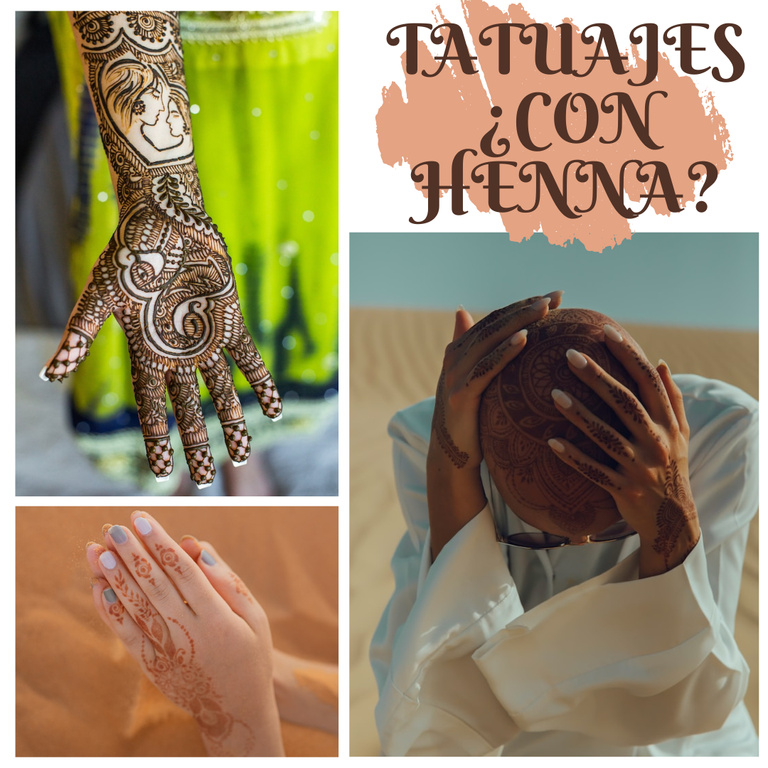
Cuando se nombran los tatuajes, por lo general se cree que cualquier marca en la piel ya es considerado como tal, pero realmente existen diferencias sutiles que solo los conocedores del tema son capaces de diferenciar.
Los tatuajes en si, son aquellos que quedan en la piel de forma permanente, mientras si se usan otros pigmentos que pueden borrarse rápido o con el paso de algunos días, son solo dibujos decorativos.
Dicho esto, la pregunta inicial puede que parezca que ya está respondida. Pero todo es cuestión del contexto en el que se analice. Para la cultura occidental, el usar pigmentos con base en la henna, es una forma de crear y recrear varias veces un tatuaje, sin que este sea de carácter permanente.
En cambio en otras culturas, forma parte de rituales y momentos tan únicos, que con un diseño temporal es suficiente.
A mi me sorprendió mucho cuando viví en Trinidad, ver mujeres con estos diseños tan particulares en sus manos. Parecieran ser mandalas o algo similar, pues son una secuencia de puntos, círculos y trazos cortos, que con el paso de los días va pasando de ser marrón a beige, hasta desaparecer por completo.
Investigando un poco al respecto, estos dibujos hechos con henna forman parte de rituales, y los particulares trazos tienen una razón de ser, pues se usan para atraer la abundancia, la salud, la fertilidad entre muchas otras cosas.
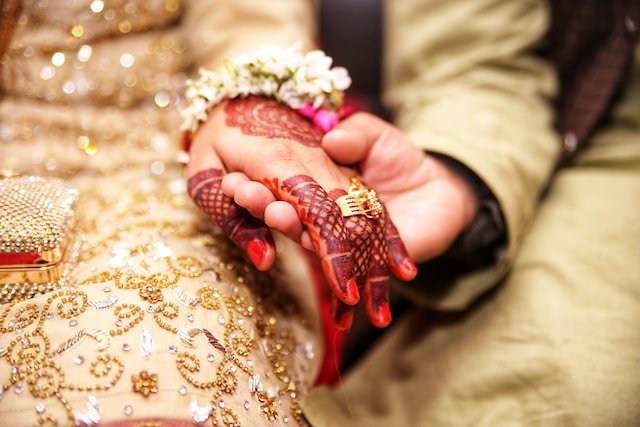
Source- Unsplash
Por lo general, son hechos a las mujeres en momentos importantes de su vida como por ejemplo para su matrimonio, embarazo y parto.
Al ser pigmentos naturales, no se corren riesgos de reacciones alérgicas, sin embargo, existe una variante de ellos que son de color negro, que se logra mezclando la henna con otro componente para cambiar la tonalidad, y es esa combinación la que si puede generar reacciones adversas en la piel como rosetones o burbujas. Por ello siempre será recomendable hacer una prueba previa, si se va a usar el negro.
Lo lindo de este tipo de "tatuajes" es que son ideales para aquellos que no se atreven a diseños permanentes en la piel, o que le temen a las agujas, por lo que acerca a cualquier persona a este maravilloso mundo de la tinta en la piel.
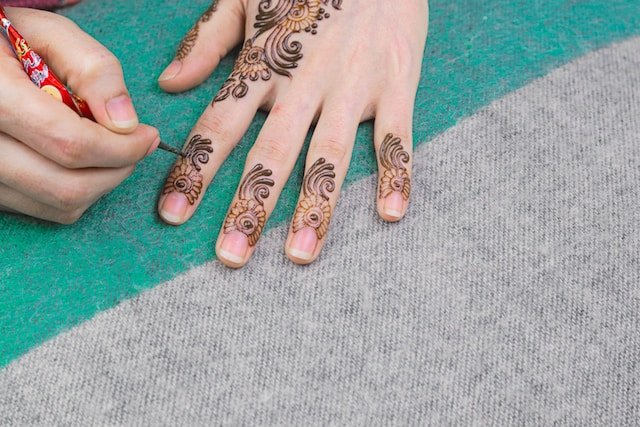
Source - Unsplash
When tattoos are mentioned, it is generally believed that any mark on the skin is already considered as such, but there are actually subtle differences that only those in the know are able to distinguish.
Tattoos themselves are those that remain on the skin permanently, while if other pigments are used that can be erased quickly or in a few days, they are only decorative drawings.
Having said that, the initial question may seem to be already answered. But it's all a matter of context. For Western culture, using pigments based on henna is a way to create and recreate a tattoo several times, without it being permanent.
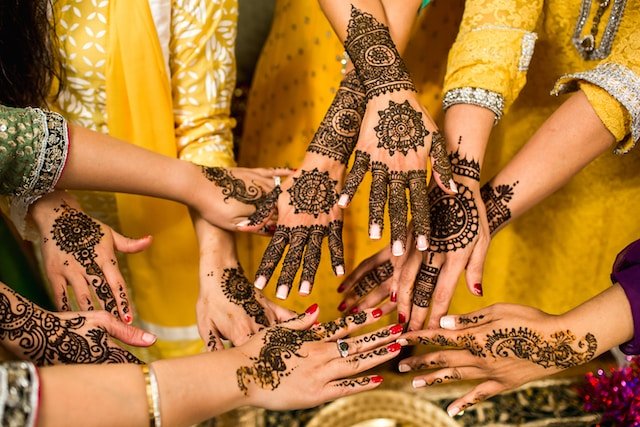
Source- Unsplash
On the other hand, in other cultures it is part of rituals and such unique moments, that with a temporary design is enough.
I was very surprised when I lived in Trinidad, to see women with these very particular designs on their hands. They seemed to be mandalas or something similar, because they are a sequence of points, circles and short strokes, which over the days goes from brown to beige, until it disappears completely.
Investigating a little about it, these drawings made with henna are part of rituals, and the particular strokes have a reason to be, because they are used to attract abundance, health, fertility among many other things.
They are usually made to women at important moments in their lives such as for their marriage, pregnancy and childbirth.
Being natural pigments, there is no risk of allergic reactions, however, there is a variant of them that is black, which is achieved by mixing henna with another component to change the tone, and it is that combination that can generate adverse reactions on the skin such as rosettes or bubbles. That is why it will always be recommended to do a previous test if you are going to use black.
The nice thing about this type of "tattoo" is that they are ideal for those who do not dare to permanent designs on the skin, or who are afraid of needles, so it brings any person to this wonderful world of ink on the skin.
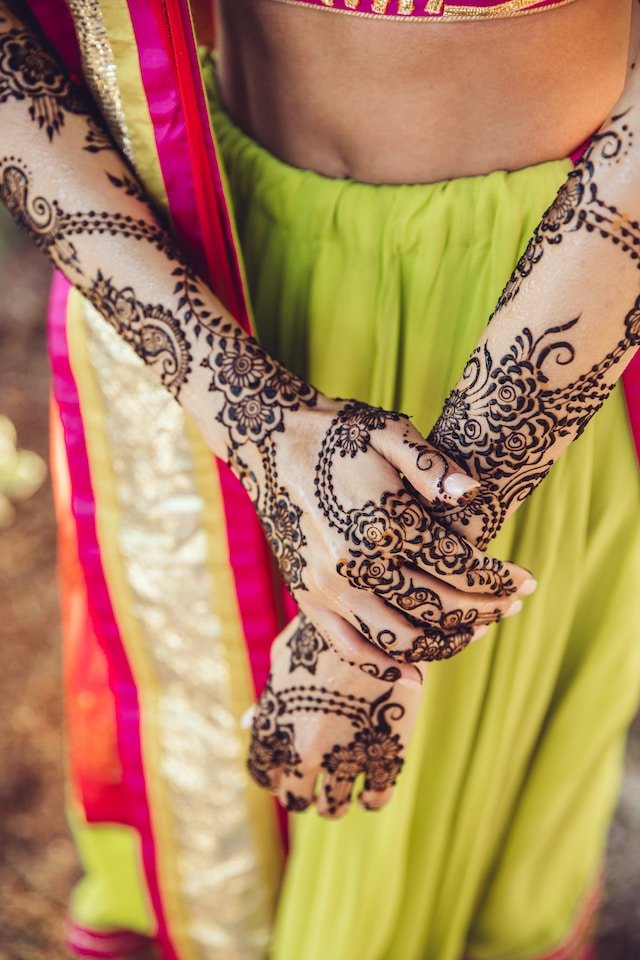
Source - Unsplash
Foto | Photo by: Vitaliy Lyubezhanin,Hassan Ouajbir, Ahmed Carter, Khadija Yousaf, Mee Nee (all from Canva)
Portada hecha/ Cover made en Canva: Unsplash . .
Edición | Edited by @mamaemigrante using Canva
Translated and formatted with Hive Translator by @noakmilo.
